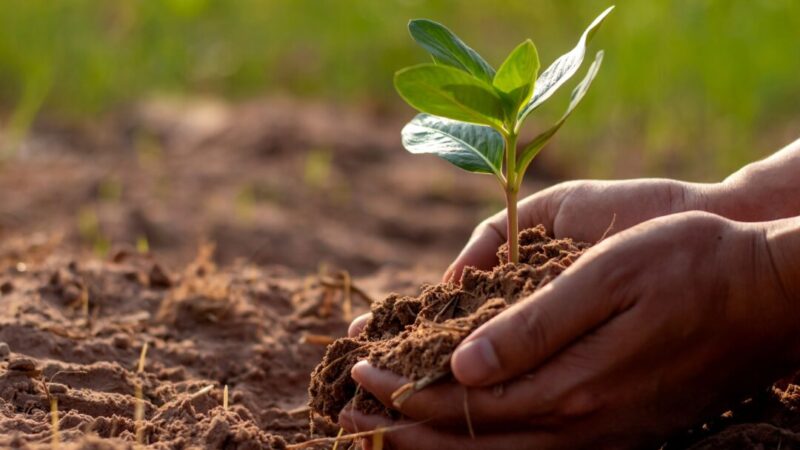Natural Organic Farming – Soil Conditioning

Principles of Soil Conditioner Utilization
Natural organic farming relies on effective soil conditioning to maintain soil health and fertility. A soil conditioner, also known as a soil amendment, consists of natural or synthetic substances that enhance soil structure. These materials, whether organic or mineral-based, improve the soil’s ability to retain water and nutrients, ensuring that plants can access essential resources without loss.
Main Concepts of Soil Conditioner Application
Effective use of soil conditioners relies on three main principles:
- Stabilizing Soil Aggregates: This approach prevents erosion and soil contamination.
- Altering Hydrophobic and Hydrophilic Properties: By adjusting these properties, soil conditioners can increase water retention capacity.
- Increasing Cation Exchange Capacity (CEC): Enhancing CEC strengthens the soil’s ability to hold nutrients (Arsyad, 2000).
Classification of Soil Conditioners
We can broadly categorize soil conditioners into two types:
- Natural Soil Conditioners: These consist of organic, biological, or mineral materials that remain structurally unchanged.
- Synthetic Soil Conditioners: Factories produce these conditioners using natural materials that undergo physical or chemical modifications.
Types of Natural Soil Conditioners
- Organic: Manure, plant residues, and biochar.
- Biological: Beneficial microorganisms and bioagents.
- Mineral: Inorganic materials that support soil structure.
Natural Organic Soil Conditioners

Several organic materials serve as effective natural soil conditioners, including:
- Manure: Nutrient-rich Animal waste.
- Plant Biomass: Pruned legume residues such as Flemingia and Calliandra.
- Crop Residues: Straw and corn stalks.
- Biochar: Charcoal derived from agricultural waste.
- Beneficial Microorganisms: Microbes that enhance nutrient cycling.
- Bioagents: Fungi and bacteria like Gliocladium sp., Trichoderma sp., Beauveria bassiana, and Metarhizium sp.
Farmers commonly use natural organic soil conditioners like manure and plant biomass. However, they often need to apply these materials in large quantities to achieve significant soil improvement. For instance, studies reveal that applying organic biomass increases soil organic matter, pH, and nutrient availability (Source: Soil Research Institute, BALITANAH, Ministry of Agriculture).
Biochar as a Soil Conditioner
Biochar is a natural soil conditioner produced from the incomplete combustion (pyrolysis) of agricultural residues like wood and cocoa shells. The pyrolysis process involves heating materials at 250°C – 350°C for 2-3.5 hours. This process produces carbon-rich charcoal that serves as a long-lasting soil amendment.
To create biochar, producers select raw materials that decompose slowly, allowing the biochar to remain effective in the soil for an extended period. In Indonesia, potential biochar sources include rice husks, coconut shells, and wood residues, all of which are abundant and readily available.
Biochar Production Methods:
- Vertical Pyrolyzer: This simple drum-based pyrolyzer contains air vents and a temperature control system. Although it is easy to construct, its capacity is limited.
- Horizontal Pyrolyzer: With a larger capacity, this design requires a higher construction cost but is more efficient for mass production.
The production process begins by placing agricultural residues into the pyrolyzer. After lighting the biomass, the operator controls the temperature using thermometers. Once the temperature exceeds 200°C, the pyrolyzer is sealed. After 2-3.5 hours, the biochar is removed, cooled with water to prevent complete combustion, and then ground and dried for application.
Benefits of Biochar Application
Applying biochar to agricultural soil offers several advantages, including:
- Increased Soil pH and CEC: Biochar enhances nutrient retention and availability.
- Improved Air and Water Permeability: The structure of biochar promotes better root development.
- Higher Carbon Content: Biochar serves as a long-term carbon sink.
Compared to other soil conditioners, biochar provides additional benefits:
- Carbon Sequestration: It reduces CO₂ emissions by storing carbon in the soil.
- Structural Stability: Due to its resistance to decomposition, biochar can remain active in the soil for over 400 years.
- Microbial Habitat: Its porous structure creates a conducive environment for beneficial microorganisms.
Biochar Application Techniques
There are two common methods for applying biochar:
- Broadcast Application: Farmers spread biochar evenly and incorporate it during the final soil preparation.
- Row Application: Biochar is applied in planting rows and covered with soil before planting seeds.
Recommended Application Rates:
- Moderately Degraded Soil (1.5% – 2% organic matter): 1.5 – 2.5 tons/ha.
- Severely Degraded Soil (<1% organic matter): 2.5 tons/ha.
- Slightly Degraded Soil (2% – 2.5% organic matter): 1 ton/ha.
(Source: Agricultural Research and Development Agency, Ministry of Agriculture, Soil Research Institute).
Discussion on Soil Conditioning by Agus Sa’id and Wahyu Garuda
- What Causes Soil Degradation?
- Excessive use of chemical fertilizers, herbicides, and pesticides.
- Neglecting organic matter replenishment.
- Continuous cropping without resting the soil.
- Effects of Acidic Soil:
- Weak plant vigor.
- Increased vulnerability to soil-borne pathogens.
- Reduced nutrient absorption.
- Poor root development due to compacted soil structure.
- Methods to Restore Soil Fertility:
- For paddy fields, return rice straw to the soil as a natural amendment.
- Apply compost at a recommended rate of 5 tons/ha.
- Add biochar to stabilize soil aggregates.
- Introduce beneficial bioagents to improve soil health.
- Fertilizer Application for Rice:
- Adjust chemical fertilizers based on plant vigor, minimizing use.
- Reduce chemical fertilizers by 50% when bioagents are applied.
- Apply organic fertilizers as both basal and supplemental doses.
- For seedling beds, spread compost and biochar, then spray bioagents before planting.
Organic Mulch by Zhi Zho
Mulch serves as a protective soil cover that maintains moisture, suppresses weed growth, and regulates soil temperature.
Organic mulch includes natural materials such as straw, leaves, and compost. Farmers apply these materials around plants, creating a protective layer that helps retain moisture, prevents erosion, and fosters healthier crop growth.

Comments are closed.